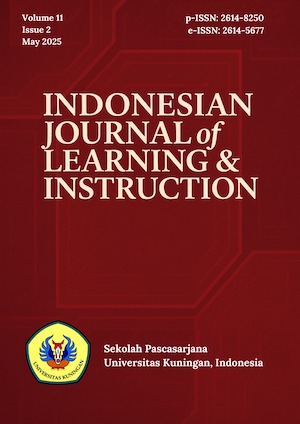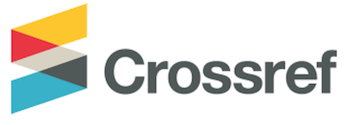READINESS OF THE POSTGRADUATES ON THE UTILIZATION OF CLOUD COMPUTING FOR LEARNING IN UNIVERSITIES IN KWARA STATE, NIGERIA
Abstract
Cloud computing is one of the newer trends in technological innovations. It is a subscription- based service in which learners and the general users have access to vast number of services such as storage, space, processing and networking resources. However, despite the numerous benefits of cloud computing for learning, there is need for proper awareness and reorientation of Postgraduates towards the use of cloud computing for learning. This study investigated Postgraduates’ readiness to utilize cloud computing for learning in Universities in Kwara State, Nigeria. The objectives of the study were to: (i) investigate the readiness of Postgraduates to utilize cloud computing for learning; (ii) examine the influence of gender on readiness of Postgraduates to utilize cloud computing for learning. The study adopted descriptive research design, using quantitative survey method. Six research questions and four hypotheses were answered and tested respectively. A total of three hundred and ninety-eight (398) respondents were randomly sampled. Frequency counts, percentages and mean were employed to answer research questions while hypotheses were tested using t-test and analysis of variance (ANOVA). The findings of the study revealed that: (i) majority of Postgraduates (59.8%) are ready to utilize cloud computing for learning; (ii) no significant difference between male and female undergraduates on their readiness to utilize cloud computing for learning. The study concluded that Postgraduates are ready to utilize cloud computing resources for learning. Thus, the study recommended that Nigerian universities should encourage postgraduates to explore full benefits of cloud computing in other to improve their learning; among many others.
Keywords: ICT; Cloud computing; readiness; utilization and learning
References
Aaron, W. (2018). What Is Cloud Computing? Everything You Need to Know About the Cloud. Retrieved October 18, 2018, from Crowd Learning Hub:
https://learn.g2crowd.com/author/aaron-walker
Ahmed, H., & Omar, M. (2015). Cloud computing and its effect on performance excellence at higher education institutions in Egypt (an analytical study). European Scientific Journal, 163 - 176.
Al-Zoube, M., El-Seoud, S. A., & Wyne, M. F. (2010). Cloud computing based e-learning system. International Journal of Distance Education Technologies (IJDET), 8(2), 58-71.
Ayinde, O. E., Muchie, M., & Olatunji, G. B. (2011). Effect of climate change on agricultural productivity in Nigeria: A co-integration model approach. Journal of Human Ecology, 35(3), 189-194.
Bhatia, S. (2014). Here are Five Surprising Ways Cloud Computing is Changing Education. Retrieved from Cloud Tweaks:
https://cloudtweaks.com/2014/12/cloud-computing-education-2/
Benton, D., & Negm, W. (2010). Banking on the Cloud. tech. report, Accenture.
Blood, E. (2011). Point systems made simple with Google docs. Intervention in School and Clinic, 305-309.
Chukwuemeka, E. E., & Aghara, V. N. O. (2010). Niger Delta youth restiveness and socio-economic development of Nigeria. Educational Research and Reviews, 5(7), 400.
Carmines, E. G., & Zeller, R. A. (1979). Reliability and validity assessment (Vol. 17). Sage publications.
Dahunsi, F., & Owoseni, T. (2015). Cloud computing in Nigeria: The cloud ecosysperspective. Nigerian Journal of Technology (NIJOTECH), 34(1), 209-216. Retrieved August 3, 2018, from http://dx.doi.org/10.4314/njt.v34i126
Duha, K. A., Ibtisam, A. A., Haider, S. A., & Hussain, A. M. (2021). Social Capital and Lifelong Learning. Policy Press.
Fisseha, M. (2011). The roles of Information Communication. Ethiopia Journal of Education and Science, 2(6), 1-16. Retrieved October 22, 2018.
Ghauri, P. & Gronhaug, K. (2005). Research Methods in Business Research.
Geelan, J. (2009). Twenty-one experts define cloud computing. Cloud Computing Journal, 1-10.
Gefen, D. & Straub, D. W. (1997). Gender differences in the perception and use of e-mail: An extension to the technology acceptance model. MIS quarterly, 389-400.
Grossman, R. L. (2009). The case for cloud computing. IT Professional, 11(2), 23-27.
Gonzalez-Martinez, J., Bote-Lorenzo, M., Gomez-Sanchez, E., & Cano-Parra, R. (2015). Cloud computing and education: A state-of-the-art survey. Science Direct, 80, 132-151. Retrieved October 24, 2018, from https://www.sciencedirect.com/science/article/pii/S0360131514001985
Guoli, Z., & Wanjun, L. (2010). The applied research of cloud computing platform architecture in the e-learning area. In 2010 The 2nd International Conference on Computer and Automation Engineering (ICCAE) (Vol. 3, pp. 356-359). IEEE.
Gupta, S. K., Kusuma, S., & Viswanath, D. (2012). Cloud computing issues and benefit modern education. Global Journal of Computer Science and Technology, 12(10), 1-7. Retrieved 10 17, 2018
Hashim, H. S., Hassan, Z. B., & Hashim, A. S. (2015). Factors influence the adoption of cloud computing: A comprehensive review. International Journal of Education and Research, 3(7), 295-306.
Hazari, S., North, A., & Moreland, D. (2019). Investigating pedagogical value of wiki technology. Journal of Information Systems Education, 20(2).
Koch, S. C., Müller, S. M., & Sieverding, M. (2008). Women and computers. Effects of stereotype threat on attribution of failure. Computers & Education, 51(4), 1795-1803
Kalagiakos, P., & Karampelas, P. (2011). Cloud computing learning. Paper presented at the Application of Information and Communication Technologies (AICT),2011 5th International Conference on.
Jaflah, A., & Zakaria, S. (2021). Assessing the readiness for cloud computing in higher education institutions in the kingdom of bahrain: Towards an education Cloud computing strategy. International Journal of Managing Information Technology (IJMIT), 13(1), 20-21
Laisheng, X., & Zhengxia, W. (2011). Cloud computing: A new business paradigm for e-learning. In 2011 Third International Conference on Measuring Technology and Mechatronics Automation (Vol. 1, pp. 716-719). IEEE.
Ilodigwe, U. T. (2015). Awareness of Students on the Usefulness of ICT Tools in Education. North Cyprus. Retrieved October 27, 2018
Interop Research Reports. (2019). 2019 State of Emerging Technology Report. San Francisco: Informatech.
Matt, G. (2011). Winds of change: Libraries and cloud computing. OCLC Online Computer Library Center. Retrieved from http://www.oclc.org/content/dam/oclc/events/2011/files/IFLA-windsof- change- paper.pdf.
Moser, C. K. G. (1989). Survey Methods in Social Investigation. Gower: Aldershot.
NIST. (2011, October 25). Final Version of NIST Cloud Computing Definition Published. NIST, 1-2. Retrieved October 18, 2018, from https://www.nist.gov/news-events/news/2011/10/final-version-nist-cloud.
Ong, C. S., & Lai, J. Y. (2006). Gender differences in perceptions and relationships among dominants of e-learning acceptance. Computers in Human Behavior, 22(5), 816-829.
Sachdeva, M., Rana, P., Kapoor, R., & Shahid, M. (2011). Cloud computing-pay as you go Technology. In Proceedings of the 5th National Conference on Computing for National Development (Vol. 161).
Sang, G., Valcke, M., Van Braak, J., & Tondeur, J. (2010). Student teachers’ thinking processes and ICT integration: Predictors of prospective teaching behaviors with educational technology. Computers & Education, 54(1), 103-112.
Shakeel, Muhammad, and Imran. (2017). Mobile phone susage and students’ perception towards m-learning: A case of undergraduate students in Pakistan. Project: Mobile Learning.
Somya, A., (2021). A survey on recent applications of Cloud computing in education: Covid-19 perspective. Journal of Physics: Conference series, 3(4) 7-18.
Sieverding, M., & Koch, S. C. (2009). (Self-) Evaluation of computer competence: How gender matters. Computers & Education, 52(3), 696-701.
Tashkandi, A., and I. Al-Jabri. (2015). Cloud computing adoption by higher education institutions in Saudi Arabia: An exploratory study. Cluster Computing, 18(4), pp. 1527-1537, 2015.
Thomas, G. (2011). The case: generalization, theory, and phronesis in case study in social science following a review of definition, discourse, and structure. Qualitative Inquiry, 17(6), 511-521.
Quasim, A., Mohammed, A. A., Godwin, J. C. (2021). Fit-viability approach for e-learning based Cloud computing adoption in higher education institutions: A conceptual model. Recent Advances in Technology Acceptance Models and Theories, pp. 331-348.
Venkatesh, V., & Morris, M. G. (2000). Why don't men ever stop to ask for directions? Gender, social influence, and their role in technology acceptance and usage behavior. MIS quarterly, 115-139.
Venkatesh, V., Morris, M. G., Davis, G. B., & Davis, F. D. (2003). User acceptance of information technology: toward a unified view. Management Information Systems Quarterly, 27(3).
Walker, A. (2018, August 14). What is Cloud Computing? Retrieved October 20, 2018, from G2 Crowd Learning Hub: https://learn.g2crowd.com/cloud-computing
Wang, H. Y. & Wang, S. H. (2010). User acceptance of mobile internet based on the unified theory of acceptance and use of technology: Investigating the determinants and gender differences. Social Behavior and Personality, 38(3), 415. http://dx.doi.org/10.2224/sbp.2010.38.3.415
Warwick, K., Garcia-Perez, A., & Odeh, M. (2015). The impacts of cloud computing adoption at higher education institutions: A SWOT analysis. International Journal of Computer Applications, 127(4), 1-9.
Writer, S. (2015). Cloud through the ages: 1950s to present day. Retrieved May 20, 2015, from http://www.thoughtsoncloud.com/2015/04/a-brief-history-of-cloud-1950-topresent-day/
Wu, C. F., & Huang, L. P. (2011). Developing the environment of information technology education using cloud computing infrastructure. American Journal of Applied Sciences, 864-871. Retrieved October 24, 2018
Zahoor, A., Solomon, M.N., Muhammad, S., (2021). The criticality of information and communication technology and human capital in environmental sustainability: Evidence from Latin American and Caribbean countries. Journal of Cleaner Production, 286(1), pp.12-32.









